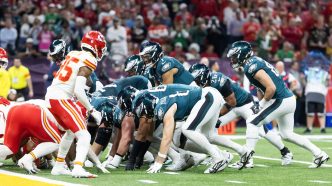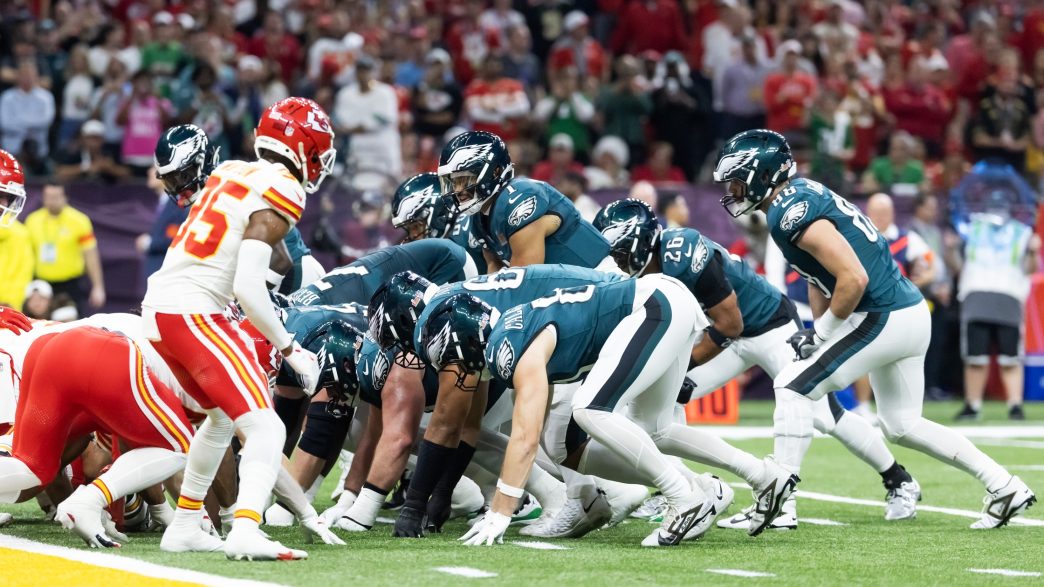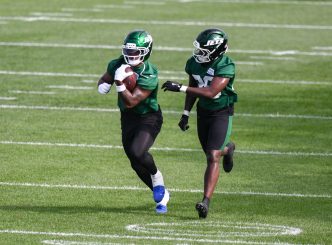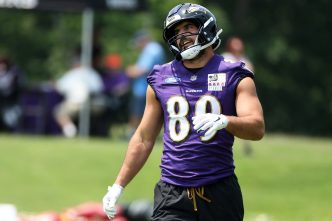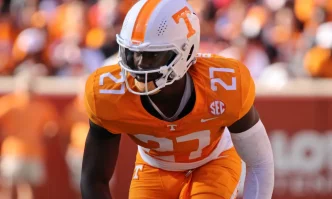In a significant discussion at the NFL’s annual league meeting in Palm Beach, the fate of the controversial “tush push” play, made famous by the Philadelphia Eagles, remains unresolved. Although an official vote was not conducted, an informal poll showed teams evenly split at 16-16 on the issue. To see the proposal to ban the play enacted, a minimum of 24 teams would have needed to be in favor.
The Green Bay Packers spearheaded the proposal to eliminate the “tush push,” which involves the quarterback taking a snap under center and driving forward with the assistance of teammates pushing from behind—akin to a rugby scrum. Specifically, the Packers’ proposal aimed to prohibit any offensive player from pushing a teammate who is directly behind the snapper and receives the snap right at the play’s onset.
The Eagles have successfully executed this play in crucial short-yardage situations under head coach Nick Sirianni, with quarterback Jalen Hurts often at the helm. Interestingly, the Buffalo Bills, featuring reigning MVP Josh Allen, have integrated their own version of the play into their offensive repertoire.
However, Tuesday’s decision didn’t fully favor those who utilize this tactic. The decision to table the vote leaves the potential for changes in the rule’s language, meaning the play as we know it might not be banned outright but could evolve in form.
Much of the debate surrounding the “tush push” has centered on health and safety concerns, particularly regarding the quarterback’s risk of injury. Yet, defensive-minded coaches have raised alarms about linemen facing head and neck injury risks during these aggressive scrums. Brian Gutekunst, the Packers’ general manager, expressed his concerns, emphasizing the importance of considering player safety over simply maintaining a strategic advantage.
“I think certainly the medical professionals at the league have high concerns about putting players in positions that could lead to catastrophic injuries,” Gutekunst stated. “We need to be proactive rather than reactive on this.”
Sean McDermott, head coach of the Bills, echoed those sentiments, advocating for the players’ health above all else. He highlighted that the added force and body posture required for the play can exacerbate injury risks. McDermott, who serves on the NFL’s competition committee, underscored that the traditional quarterback sneak method had its merits and lessened potential dangers compared to the “tush push.”
On the flip side, coaches like Kevin Stefanski of the Cleveland Browns and Shane Steichen of the Indianapolis Colts voiced their support for maintaining the play as is. Stefanski pointed out the lack of injury data supporting a change, while Steichen articulated the play’s proven effectiveness, recalling its long-standing presence in the game.
As for other developments during the league meetings, several rule proposals saw approval. Teams will now have the opportunity to possess the ball in overtime during the regular season, although the overtime period remains at 10 minutes. The use of expanded replay assistance—allowing for clearer oversight on specific aspects of plays—was also greenlit. Furthermore, the new dynamic kickoff rule has been made permanent, pushing touchbacks to the 35-yard line.
An impending rule amendment concerning onside kicks, which would permit teams to declare an onside kick at any time if they are trailing, will be revisited and voted upon in May. The NFL continues to prioritize both gameplay innovation and player safety as it navigates these complex issues.

